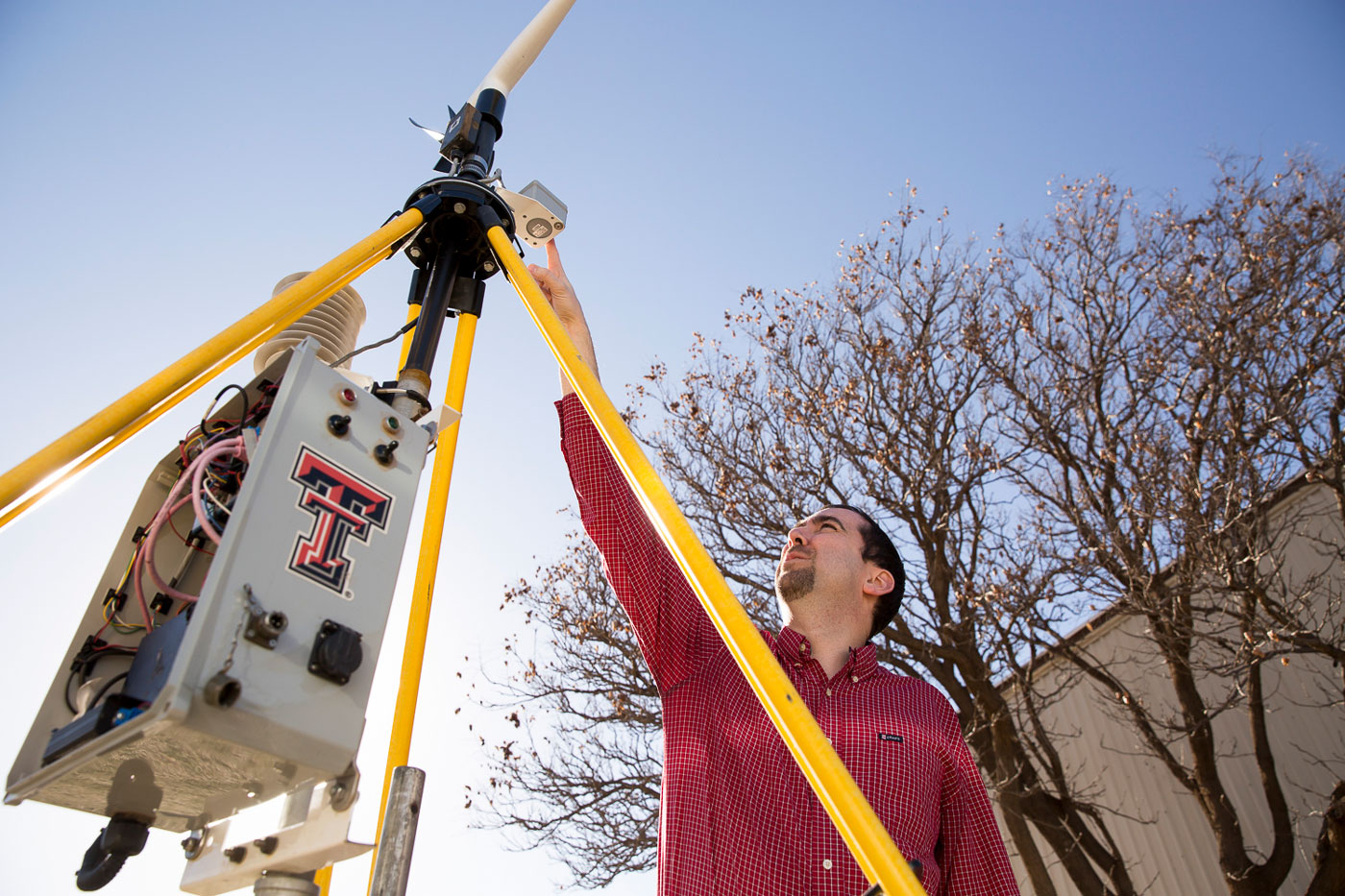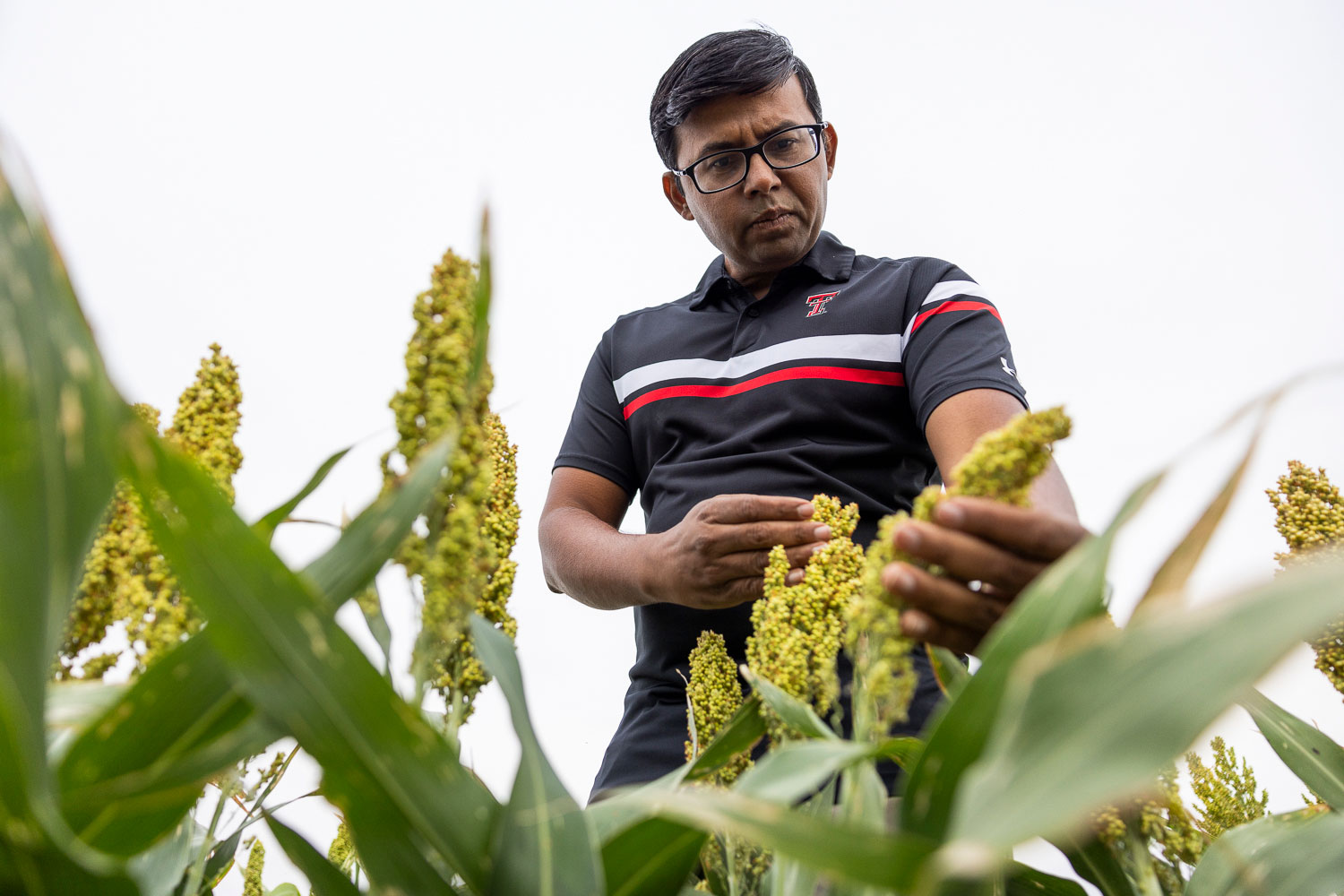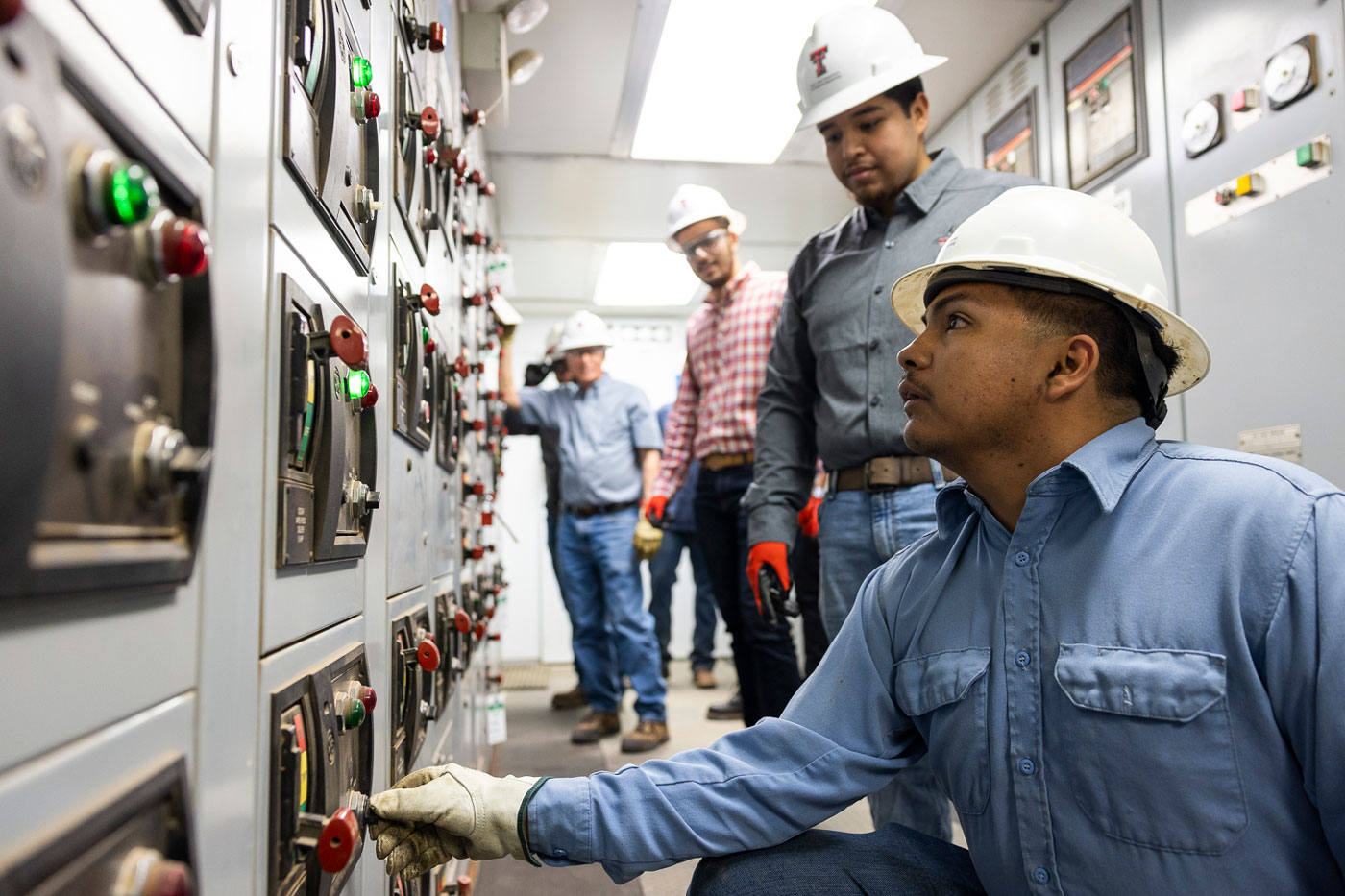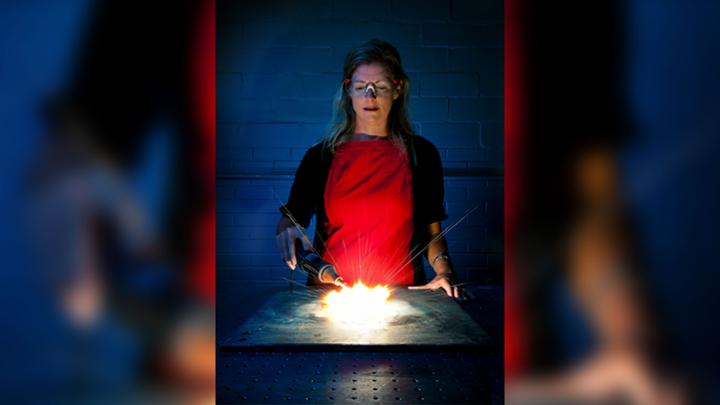With so much already accomplished, the possibilities from here are endless if the TUF passes.
Texas Tech University’s centennial year is drawing to a close, and looking back at the first 100 years is nothing short of amazing.
In 1923, when Texas Tech was founded, many of the issues researchers are working on today didn’t exist.
Who would have thought then that water would be a primary concern? There was no cyber to secure, no COVID-19 to test for. Cotton was barely graded, there was no system for measuring tornado strength, beef grading was more of an idea than a reality and nuclear energy was little more than a dream for the future.
What will the next 100 years look like?
With the Texas University Fund (TUF) on the ballot in November as Proposition 5, Texas Tech’s next 100 years look like an opportunity to change the world.
Looking back, it’s worth remembering what has already been accomplished and taking some pride in what has already been done to combat issues of the past.
Take for instance the tornado that struck Lubbock in 1970, claiming 26 lives. Texas Tech responded that day, opening its doors and lending its resources to the local community. And each day in the five decades since, researchers have done everything in their power to help prevent similar tragedies.
The Lubbock tornado spawned the world-renowned National Wind Institute (NWI) at Texas Tech, where researchers work tirelessly to better understand, predict and mitigate the damage from large-scale wind events like tornados. Thirty years after the Lubbock tornado, Texas Tech faculty members led in the creation of the Enhanced Fujita Scale, which is used nationwide today.
As recently as a few months ago, members of the NWI were on the ground in the nearby town of Matador, once again looking for life-saving measures following another devastating storm.

NWI’s work, of course, will never fully be done, but through the years, it has helped create better systems for alerting the public, installed more weather stations, and offered valuable insight to city planners on how to better engineer buildings to withstand such events.
The National Wind Institute is one of dozens of research centers and institutes at Texas Tech that profoundly impact the region, the state and the world.
Multiple centers are focused on water, studying everything from the policies that govern it to how it can best be used in securing the world’s food supply. Others focus on national security, food industry excellence, cyber security, pulsed power and electronics, family systems, financial responsibility, free markets, biodefense and sustainability through a nitrogen circular economy.
Each center on campus is already contributing to the world in some way, but there is much more to come.
With a renewed focus on strategic research themes, the impact made by Red Raiders over the next 100 years will be immense.
With a laser focus on what the university has always done well – agriculture, energy, climate and national security – and the addition of a One Health initiative, Texas Tech is primed to lead the world into the future.
Agriculture Research at Texas Tech
To the surprise of none, Texas Tech is already a world leader in agricultural research. The Davis College of Agricultural Sciences & Natural Resources is home to the Fiber & Biopolymer Research Institute (FBRI), the Davis College Water Center, the Institute for Genomics of Crop Abiotic Stress Tolerance (IGCAST), the International Center for Agriculture Competitiveness and the Thornton Agriculture Finance Institute, along with others.
Among the world-class faculty are people like Noureddine Adibi, the Leidigh Professor in the Department of Plant and Soil Science and managing director of the FBRI. Adibi’s work on converting low-grade cotton into a gel with variable use qualities offers local producers a way to recoup money on low-quality cotton crops in bad years.
His work goes hand-in-hand with other high-level researchers like Horn Distinguished Professor Eric Hequet. Hequet has co-developed and co-released more than 20 improved germplasm lines of upland cotton. His work was recognized by the Joint Cotton Breeding Committee in 2019.
Cotton research at Texas Tech is so prolific the U.S. Department of Agriculture (USDA) has partnered with the university, which now houses a first-of-its-kind cotton classification complex on campus.
While cotton is a primary crop in the region and holds immense importance at Davis College, researchers aren’t just focused on fiber.
National Academy of Science member Luis Herrera-Estrella is the director of IGCAST, which is focused on using new technology to study crop tolerances to different types of abiotic stress (drought, salinity, heat, cold and low nutrient availability.)
Securing a sustainable food supply is just as important as providing clothing for the world. A massive part of ensuring the sustainability of the world’s food supply is securing its water future, and the Davis College Water Center, along with the Texas Alliance for Water Conservation (TAWC), are doing just that.

Researchers from the water center have been tasked with studying the vitality of the Ogallala Aquifer, a primary source of irrigation for crops and livestock, and the TAWC works directly with producers in the area to bring new technologies and best practices into use on farms across the region.
Alongside water research, Davis College’s International Center for Food Industry Excellence (ICFIE) brings all elements of food production together under one center.
Directed by former U.S. Under Secretary of Agriculture for Food Safety and Horn Distinguished Professor Mindy Brashears, ICFIE looks at food access, food availability, food stability and food utilization with the mission to serve the food industry, producers and consumers by providing the world with a more secure food supply.
Researchers in ICFIE and the Department of Animal & Food Sciences have worked on everything from industry standards for food safety to developing new technology for determining the tenderness of beef in real-time.
Climate Research at Texas Tech
Agriculture’s importance to Texas Tech made climate research a priority for the university, and it all starts with the Climate Center.
Co-directors John Zak and Katharine Hayhoe lead a conducting interdisciplinary team of renowned researchers. Their work has gained them worldwide acclaim, and what they do is relevant to every person on Earth.
Part of the South Central Climate Adaptation Science Center, Texas Tech’s Climate Center belongs to a network of eight regional centers created to provide science and tools that managers of land, water, wildlife and cultural resources can use to plan for and respond to a changing climate.
The research done by Climate Center members extends from Antarctica to the glaciers of the North Atlantic.
Researchers from Texas Tech have created the framework for faster and more accurate models, examined how climate variability impacts health and socioeconomic issues around the world and studied the impact of weather patterns on climate change and the effects of aerosols on the weather.
Energy Research at Texas Tech
Another priority for researchers at Texas Tech is investigating how to better power our future.
The oil and gas industry will remain an important piece of the puzzle, one that the university is committed to teaching students both on its own drilling rig and through a partnership that enhances geosciences research, exploration and innovation.
But additional energy options are also unfolding, thanks to the work of Texas Tech faculty members.

Robert V. Duncan, professor and president’s distinguished chair in the Department of Physics and Astronomy, and his team within the Center for Emerging Energy Sciences (CEES) lab are exploring alternative nuclear energy possibilities that will be safe and produce no fuel-related nuclear waste.
Making the most of a vast natural resource on the South Plains, Texas Tech is also studying the potential for wind to power the world. In research funded by the Department of Energy, Texas Tech is investigating turbine-to-turbine interactions, including inefficiencies that result when one turbine impacts the inflow into another.
And to make the most of these options, our researchers aren’t just looking at creating that energy they’re also trying to make it more usable later on.
The Center for Pulsed Power and Power Electronics is focused on storing, shaping, transmitting and measuring high-voltage, high-current pulses with the goal of delivering electrical energy better, while the Global Laboratory for Energy Asset Management and Manufacturing (GLEAMM) project brings together research on hybrid energy generation, storage, resiliency, cybersecurity and infrastructure recovery during a disaster.
National Security Research at Texas Tech
In the early 1940s, Texas Tech was a training ground for soldiers heading into World War II. Today, Texas Tech is still on the front lines of making our country safer and more secure – those efforts just look different. Now, we’re focused on better equipping our military and making our systems more resistant to attack.
It doesn’t hurt that a Texas Tech alumnus is the highest-ranking and most senior military officer in the U.S. Armed Forces and the principal military adviser to the president, the National Security Council, the Homeland Security Council and the secretary of defense. However, Texas Tech was committed to the causes of national security well before Gen. C.Q. Brown Jr. arrived on campus.
Michelle Pantoya, a professor and the J.W. Wright Regents Chair in the Department of Mechanical Engineering, is leading the collaborative Energetic Material Basic Research (EMBR) Center to ensure the U.S. stays on the cutting edge of technology and has a workforce capable of providing our military and homeland security with the tools they need.
One such initiative is the work of James Yang to understand and control the effects of parachute opening shock. When military members are in a free-fall parachute jump, there’s a moment when the parachute opens, and their rate of free-fall is drastically slowed. His research seeks to understand how paratroopers’ bodies react to that deceleration so potential musculoskeletal injuries can be prevented.
Technology is another area of national security research at Texas Tech.
Semiconductors help power just about everything from power tools to phones, computers and fighter jets. Texas Tech’s Nanophotonics Center is co-directed by Hongxing Jiang and Jingyu Lin, both Horn Professors and members of the National Academy of Inventors. They are internationally recognized for their work on wide and ultra-wide bandgap semiconductors, which could be used for everything from improved radar for the military to securing a stable power grid.
Invented by Texas Tech University professor Seshadri Ramkumar, FiberTectTM was conceived in 2005 as a low-cost decontamination wipe for the U.S. military that could absorb and neutralize the gases and liquids used in chemical warfare. Then, after the Deepwater Horizon oil spill in 2010, the material was re-engineered to safely clean up the oil.
Texas Tech faculty member Ori Swed recently provided his expertise to NATO on terrorists’ use of drones and the threats they pose.
And there’s all the work happening in the Center for the Science & Engineering of Cyber Security (CSECS) to develop better software, model threats, evaluate and verify security measures, and address the needs of both wired and wireless networks.
Texas Tech even launched its Institute for Peace & Conflict to enhance and expand critical research, creative scholarship and classroom teaching in the fields of war and society, global peacemaking, conflict resolution and society’s response to such efforts.
One Health Research at Texas Tech
What does it mean to be healthy?
It’s a seemingly simple question with a thousand potential answers, depending on your perspective and the patient in question.
One Health is about the interplay between human, animal and environmental health. It’s the concept at the core of all the work happening in The Institute of Environmental & Human Health, but it also spills over into dozens of other research areas at Texas Tech.
Researchers in Davis College’s Department of Natural Resources Management have dealt for years with Chronic Wasting Disease and Bluetongue, which threaten the Central Texas hunting and ranching industries.
There’s the potential for animal-borne diseases to infect humans. We have plenty of recent examples, from the West Nile Virus we deal with every year to larger threats like Zika virus.
Texas Tech’s Zoonotic & Infectious Diseases Research Center was founded specifically to deal with such questions, but One Health takes an even larger approach.
It looks from the macro level, dealing with entire species and their interactions with one another, to the microscopic level.
Among Texas Tech’s current One Health initiatives are Steve Presley and Harvinder Gill’s research to develop a universal flu vaccine, finding a cure for peanut allergies, uncovering the brain mechanisms behind addiction, solving the potentially life-threatening problems posed by sepsis in healthcare settings, addressing the varied health and educational needs of people with autism and their families, reducing the risk of mental health crises among rural veterinarians and health care workers, and uncovering the causes of obesity in hopes of curing it someday.
With the work of the Nutrition & Metabolic Health Initiative, the Center for Collegiate Recovery Communities, the Neuroimaging Institute, the Burkhart Center for Autism Education & Research and a dozen other such entities, Texas Tech is committed to creating a healthier future for all.
The Opportunity to Elevate
As President Lawrence Schovanec said in his State of the University address last month, it would have been hard for Texas Tech’s founders 100 years ago to envision the university that stands in Lubbock today.
From its humble beginnings, Texas Tech has emerged as a Carnegie Tier 1 research institution. Last fiscal year, the university spent more than $230 million on research.
With the anticipated support from the Texas University Fund, the possibilities are endless.
The permanent university endowment of around $3.9 billion would allow the state to invest heavily in the research being done by its top universities, but it will require a constitutional amendment approved by Texans.
The TUF comes with no new taxes and the distribution to universities will be dedicated to research resources. The endowment would allow Texas Tech to take its already impressive research activities to an even higher level.
Solutions to the world’s biggest challenges don’t come easily, but they can be found, and Texas Tech is primed to find them.
The year 1923 will forever be remembered as the year Texas Tech was founded, and with a little help from voters in Texas, 2023 could be remembered as the year our state staked its claim as the place the world comes for answers.

